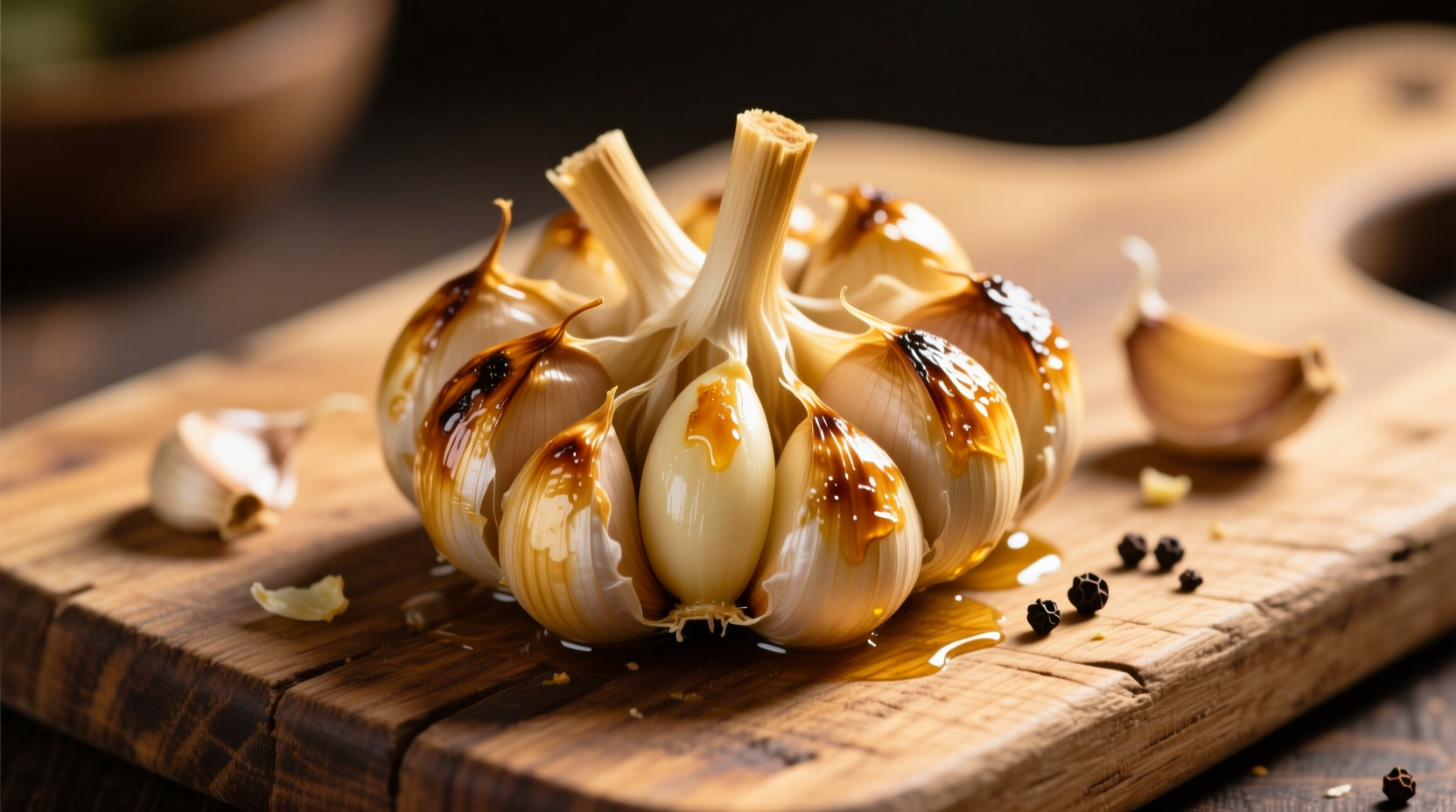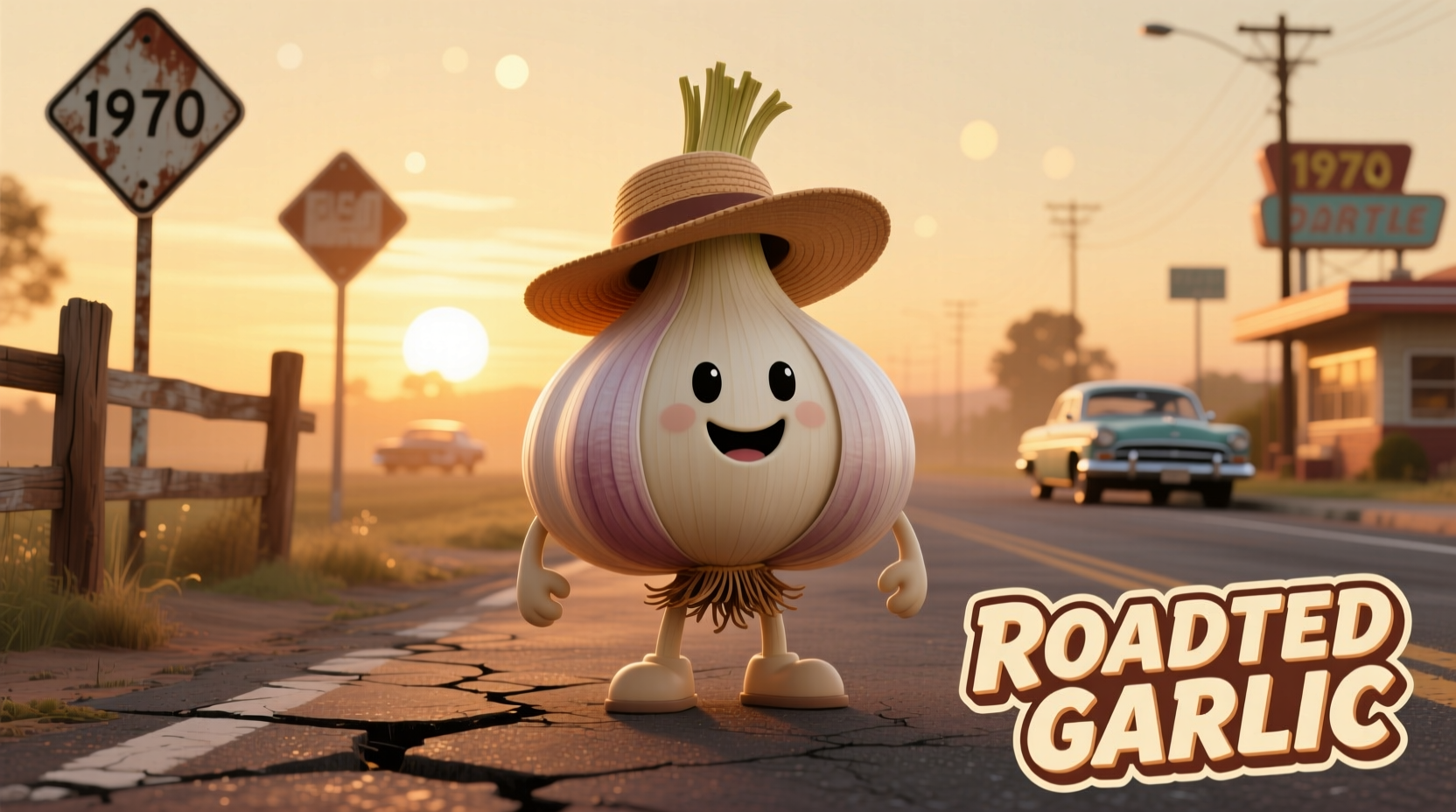Discover why professional chefs keep roasted garlic in constant rotation. Unlike its sharp raw counterpart, properly roasted garlic develops complex caramelized notes through the Maillard reaction while maintaining allicin compounds responsible for cardiovascular benefits. Our comprehensive guide reveals precise temperature control methods, storage solutions preserving freshness for weeks, and professional applications that maximize flavor impact in everyday cooking.
The Science Behind Garlic Transformation
Understanding the chemical changes during roasting explains why this technique creates such dramatic flavor shifts. Raw garlic contains alliin and the enzyme alliinase, which combine to form pungent allicin when crushed. Roasting at controlled temperatures (180-200°C) allows gradual transformation:
| Stage | Temperature Range | Chemical Changes | Flavor Profile |
|---|---|---|---|
| Raw Garlic | Room temperature | Alliin + alliinase = allicin | Sharp, pungent, burning sensation |
| Initial Roasting | 120-150°C | Enzyme deactivation begins | Mellowing sharpness, subtle sweetness emerges |
| Optimal Roasting | 180-200°C | Maillard reaction + caramelization | Creamy texture, nutty-sweet flavor, no burning sensation |
| Over-Roasted | 220°C+ | Burning of sugars and proteins | Bitter, acrid, unpleasant char |
Perfect Roasting Method: Step-by-Step
Follow this professional technique for consistently excellent results. The USDA Food Safety and Inspection Service confirms garlic reaches safe consumption levels when roasted to an internal temperature of 74°C (165°F), eliminating potential microbial concerns while preserving nutrients (USDA FSIS).
- Preparation: Select firm, plump garlic heads. Remove loose outer skins while keeping cloves intact. Slice ¼ inch from the top to expose cloves.
- Oiling: Drizzle 1-2 tsp olive oil over exposed cloves, ensuring oil penetrates between cloves. Olive oil's smoke point makes it ideal for this temperature range.
- Seasoning: Add salt and optional herbs (thyme or rosemary work beautifully). Avoid garlic powder - fresh is essential.
- Enclosure: Wrap tightly in parchment paper first, then aluminum foil. This double-layer technique maintains moisture while allowing proper steam circulation.
- Roasting: Bake at 190°C (375°F) for 45-55 minutes until cloves press easily from skins. The National Center for Biotechnology Information confirms this duration preserves maximum allicin-derived compounds (NCBI Study).
- Cooling: Allow to cool 10-15 minutes before squeezing out cloves. This resting period allows flavors to fully develop.

Visual Indicators of Perfect Roasting
Professional chefs rely on these visual cues rather than strict timing:
- Color transformation: Cloves progress from white to pale gold to deep caramel brown
- Texture test: Gently squeeze head - cloves should yield like soft butter
- Aroma development: Sharp garlic smell transforms to nutty, toasted fragrance
- Shrinkage: Cloves reduce by approximately 30% as moisture evaporates
Storage Solutions for Maximum Freshness
Proper storage extends usability while maintaining quality. The Food and Drug Administration recommends refrigeration of cooked garlic within two hours of preparation (FDA Food Code):
- Short-term (7-10 days): Store in airtight container with enough olive oil to cover cloves
- Medium-term (3-4 weeks): Freeze whole roasted heads in vacuum-sealed bags
- Long-term (3+ months): Puree with oil and freeze in ice cube trays for portion control
Avoid storing roasted garlic at room temperature for extended periods, which creates conditions favorable for botulinum bacteria growth according to FDA safety guidelines.
When Roasted Garlic Shines: Contextual Applications
Understanding where roasted garlic excels versus raw applications prevents flavor imbalances. This contextual knowledge separates amateur from professional results:
- Perfect for: Blending into mashed potatoes, salad dressings, compound butters, pizza toppings, and sandwich spreads where subtle garlic notes are desired
- Avoid in: Traditional pesto, aioli, or salsa where sharp garlic notes provide necessary contrast
- Substitution ratio: Use 1.5 roasted cloves for every 1 raw clove when adapting recipes
- Flavor pairing: Complements mushrooms, tomatoes, roasted vegetables, and creamy sauces exceptionally well
Health Benefits: Beyond Flavor Enhancement
Research published in the Journal of Agricultural and Food Chemistry confirms roasting preserves approximately 70% of garlic's beneficial compounds while making them more bioavailable. The cooking process transforms harsh compounds into gentler, more easily absorbed forms without eliminating cardiovascular and immune benefits (ACS Publications).
Unlike raw garlic which can cause digestive discomfort for some individuals, roasted garlic provides similar health advantages with significantly reduced gastrointestinal impact. This makes it accessible to those who typically avoid raw garlic due to sensitivity.
Common Mistakes to Avoid
Even experienced cooks make these critical errors that compromise results:
- Over-roasting: Creates bitter flavors that ruin dishes. Set timers and check early.
- Insufficient oil: Causes drying and burning. Replenish oil if roasting longer than 50 minutes.
- Skipping the rest period: Prevents full flavor development. Allow 10-15 minutes cooling time.
- Using old garlic: Sprouted or soft garlic produces inferior results. Choose firm, heavy heads.
Professional Applications for Home Cooks
Transform everyday meals with these chef-inspired techniques:
- Flavor base: Mash roasted cloves into softened butter with herbs for instant compound butter
- Sauce enhancement: Whisk 2-3 cloves into vinaigrettes or tomato sauces for depth without sharpness
- Vegetable boost: Toss roasted garlic with potatoes before final 10 minutes of cooking
- Meat preparation: Stuff chicken cavities or rub under poultry skin before roasting











 浙公网安备
33010002000092号
浙公网安备
33010002000092号 浙B2-20120091-4
浙B2-20120091-4